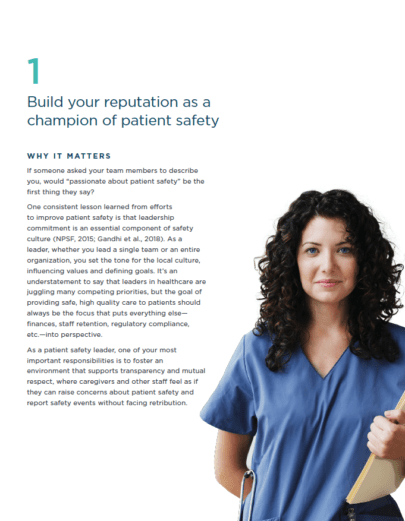How’s your organization doing in keeping your patients safe? Patient Safety Awareness Week is March 13-19, 2022, so it’s a good time to ask this question and make an honest assessment of where you stand.
What is Patient Safety Awareness Week?
Patient Safety Awareness Week, sponsored by the Institute for Healthcare Improvement, happens every March and serves as a time to encourage both the public and healthcare professionals to learn more about healthcare safety and to inspire system changes to improve patient safety.
The first national patient safety week was launched by the National Patient Safety Foundation in 2002, in the wake of the watershed To Err Is Human report, which galvanized national concern about programs to improve patient safety with its claim that as many as 98,000 people die in U.S. hospitals each year as a result of preventable medical errors. (The National Patient Safety Foundation merged with the Institute for Healthcare Improvement in 2017).
To Improve Patient Safety, Culture is Everything
One thing we’ve learned over last two decades of research and practice since To Err Is Human is that improving patient safety is a complex, multifaceted problem, which won’t be solved by piecemeal, ad hoc initiatives. Instead, understanding how to improve patient safety requires a total systems approach and, first and foremost, the creation of a strong culture of safety within an organization. The safety culture of an organization encompasses both shared values and the behaviors and structures that flow from these values.
The idea of creating a culture of safety can seem both a little daunting and a little abstract. How does one even start? The evidence base of the past two decades shows us that there are concrete steps that healthcare leaders can take in the short term to advance a long-term, sustainable safety culture in their organizations.
These are things you can do right now, this week, to advance essential aspects of a culture of safety in your organization:
Build Your Reputation as a Champion of Patient Safety
If someone asked your team members to describe you, would “passionate about patient safety” be the first thing they say?
One consistent lesson learned from efforts to improve patient safety is that leadership commitment is an essential component of safety culture. As a leader, whether you lead a single team or an entire organization, you set the tone for the local culture, influencing values and defining goals. It’s an understatement to say that leaders in healthcare are juggling many competing priorities, but the goal of providing safe, high quality care to patients should always be the focus that puts everything else — finances, staff retention, regulatory compliance, etc. — into perspective.
One action you can take this week:
At your next huddle or staff meeting, whether it’s a daily huddle with your team or a weekly leadership huddle, make a point of speaking up about the importance of ways to improve patient safety. Once you’ve set this precedent, look for opportunities to encourage discussion of safety at future meetings and to link all pressing initiatives to the core mission of keeping patients safe.
Listen to Your People
The evidence trail demonstrates the negative effects that burnout and dissatisfaction among healthcare professionals can have on patient care, including increases in diagnostic and patient safety errors, omissions of necessary care, reduced teamwork, dissatisfied patients who are less likely to adhere to treatment plans, and the list goes on.
The statistics on clinician burnout are troubling, with research indicating that 35-54% of U.S. nurses and physicians manifest substantial symptoms of burnout — emotional exhaustion, depersonalization (i.e., cynicism), and loss of a sense of personal accomplishment. Given these numbers, it’s possible, even likely, that members of your team could be experiencing or could be at risk for burnout, affecting their own well-being as well as that of their patients.
The place to start in understanding the realities of the work life of your team members is simply to ask them. Of course, this requires an opening of the lines of communication and the building of trusting relationships. In addition to the team communication that happens during huddles and staff meetings, a regular cadence of one-on-one conversations between leaders and team members can enable a more candid level of conversation than is often possible in a group setting. Leaders who round with their teams with the sincere intent to listen and learn about each individual’s experiences and insights can assess and address the local drivers of frustration as well as hear about what is working well and how to build on it. An added bonus: You might also discover some great ideas for improving processes and measures to improve patient safety from those who are doing the work every day.
One action you can take this week:
Begin a regular, manageable cadence of 10-minute, one-on-one leader rounds with team members. Identify team members to include on your schedule and communicate to them the purpose and importance of what you’re doing.
Editor’s Note: This post was originally published in March 2020 and has been updated with new content.

Five Things You Can Do This Week to Make Your Patients Safer
Download this white paper to learn more about how leadership, focused listening to both care teams and patients, team communication, and staff education and development are essential components of a culture of safety and about practical actions you can take right now, this week, to advance each domain.
DOWNLOAD THE WHITE PAPER →





